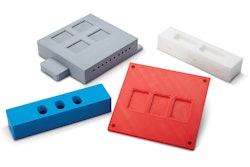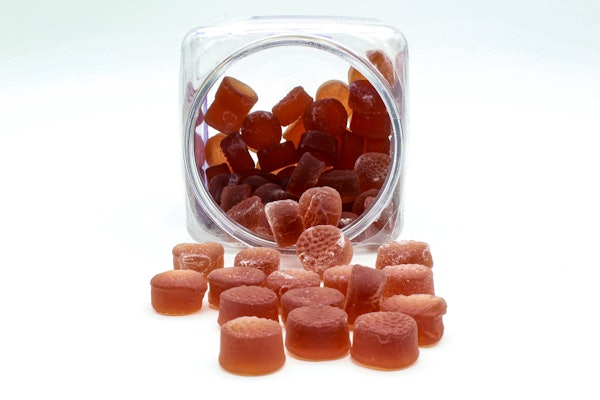Quick hits:
- In e-comm 1.0, packaging that was optimized for retail was simply over-boxed or re-packaged for e-comm, essentially doubling the packaging.
- Now, more brands are creating packaging that’s specifically optimized for the D2C or e-comm channel rather than retail. SIOC is one example.
- Another option might be to create a single package for both e-comm and retail. This might not be specifically optimized for either channel—it may be more robust than is required for retail, for example. But brands might find savings in using a single packaging format for multiple channels.
- Brands and CPGs using QR codes are able to collect behavioral information on how consumers are using and interacting with packaging, and this can help them to design packaging that’s easier to recycle or properly dispose of, increasing consumer adherence to sustainability programs.
- Designing a Sustainable E-Commerce Package in Today’s Competitive Packaging Landscape
- Dutch Bakery’s E-Comm Pack Keeps Cakes Cool
- D2C SIOC Shoes Make Sustainable Statement
 | Read the transcript below: |
Matt Reynolds: Hello, I’m Matt Reynolds, editor of Packaging World magazine, back with another edition of Take Five.
A couple of weeks ago, I sat down with Paul Jenkins, Managing Director of The Pack Hub in the U.K., for a joint webinar discussing sustainability as it applies to e-commerce packaging. You can access the whole webinar in the link below. But we addressed a couple of interesting questions.
The first was a look at the bigger picture, asking us where we thought e-commerce packaging is going and how it’s changing. I think I remember Paul made some interesting points, so let’s listen in to that portion of the webinar. Afterward, stick around for a quick message from PMMI, and more on sustainable D2C and e-commerce packaging, after the break.
Matt Reynolds: One thing we've noticed just a few slides ago, we were looking at the difference between the Keurig Dr Pepper's coffee pods in a carton. That's really a question of where packaging is going, because currently no matter what the product is, it's packaged for retail first. Then, if it ultimately becomes part of the D2C or eCommerce channel, only then will secondary package or over box be applied. So the question is what's packaging going to look like in a few years? I'll open that up to you, Paul, and I've got a few thoughts on my own.
Paul Jenkins: I've always thought that there is room in the market to have more eCommerce specific pack formats. For example, if you walk down a supermarket aisle and down a cereal channel, and your eyes are drawn to a Cornflakes box, which says "buy me." It has 30% off flashes. It has things that are there to entice you to buy it at the point of sale in a bricks and mortar outlet. That same box, if you ordered online is delivered to you to your home. My contention is that, well, one day there'll be a specific Cornflakes box, for example, that doesn't have that messaging because the sale is on a computer screen or a mobile phone. So I just think there is room to have more specific packaging for the eCommerce channel, particularly as it's just getting bigger and bigger. One day the eCommerce channel will one day be bigger than the bricks and mortar channel. So at what point does that become the dominant pack format? I don't know. I just think that there is an option and opportunity to move more in that direction.
Matt Reynolds: Absolutely. I agree. Optimizing a package specifically for the channel that it's going in is one route that folks are going. The drawback there is that means you would have to have two packaging lines. You would have to have one line that's running those corn flakes, traditional, retail ready. The zero moment of truth of purchase there is when I'm in a cereal aisle, and I'm deciding between the healthy Cheerios on one side, and the cocoa puffs on the other. So that's when I'm making the decision, but when I'm doing making that decision online, I'm not looking at a cereal box necessarily. There's other queues. There's other indicators. That are pushing me towards that purchase. So again, that requires two totally different pack styles. One that's required to handle the rough and tumble e-commerce channel, and all the touches that are from distribution center to film and center all the way down to the last mile, last meter on my porch. Versus retail where I'm picking something up and bringing it home doesn't require nearly as robust of a packaging system.
Matt Reynolds: So from a brand's perspective, as you mentioned, at what point are we going to optimize for both? Again, the drawback, it means a whole new packaging line, a whole lot more new machinery and two diversion lines. I think it's interesting to think about an omnichannel pack that could potentially accomplish both. It could be optimized. It's not going to be 100% optimized for either one, but rather reach a happy medium where it will be a robust enough pack to handle the e-commerce channel. Maybe more robust than is necessary for the retail environment, but regardless the brand or the CPGC savings and only requiring one single packaging line. One package fits all for all channels. So I think that's a potential direction either optimizing for each channel, or actually optimizing for a single pack that fits all are two potential directions that I see this going. Paul, anything else? Or should I dive into the secondary question?
Matt Reynolds: And we’re back. A second question asked us about the hurdle of consumer education when it comes to e-commerce packaging, and having to train consumers to properly dispose of recyclable D2C packaging. Paul and I tackled that question, and how delve into how brands are using QR codes to learn about their customers behaviors and optimize their packaging processes around those behaviors. Let’s listen.
Paul Jenkins: Let's dive into the next question.
Matt Reynolds: So I think anybody who was following along this entire presentation noticed the number of QR codes along the way, and that's just an indicator of how much consumer messaging and education is required. I think a grand example of that is the reusable packaging. We ended that our last slide. There's these systems or starter kits where you get a larger, robust package with durable, maybe it's aluminum, maybe it's a heavier plastic spray bottle or, or, or hand soaked dispenser. Those are meant to be refilled over time by much more lightweight. Refills are perhaps concentrated instead of shipping water. you use concentrated material where you add your own water at the very last mile when you're about to refill that durable container.
Matt Reynolds: So the thing is when you're buying something from a retail shelf, that's all the mental work that a consumer has to do in order to be able to use that product. The reusable red doable systems require a lot more consumer education. So the question becomes is this viable, are consumers going to be able to latch on to this as the system of the future? Paul I'll open that up to you to begin.
Paul Jenkins: I think getting vital feedback from consumers is going to be key to refine and change and modify the reusable packaging systems. That is going to be an absolute key part of this as a challenge, really. A capitalist society is about convenience. We've had it drummed down our throats for the last 30 or 40 years, that in a brand A is more convenient than brand B and reusable and refillable packaging doesn't necessarily tick those boxes. So I think there's a big educational piece required to understand what consumers really want and what they think. Also, to help them guide them to actually accept that this new solution may be slightly less convenient, but actually is better for the environment and better for the future world. So there's a lot of work to continue really, to understand a lot more about consumer behavior and what they think in the brief space.
Matt Reynolds: I think you make a great point. I mentioned consumer education being so necessary. It's not just consumer education via those QR codes. It's brand education and distributor and retail education. Getting that feedback as to how consumers are using their products, and being able to meet them in the middle and create a product that's more optimized for the user experience. Not just trying to force consumers to adapt to whatever their initial 1.0 version of that recyclable reusable format is. So it's really brands meeting consumers in the middle. The consumer education piece is huge, but also the brand education piece to continue to optimize these systems.
Matt Reynolds: Ultimately, I think that the threshold or the barrier here is going to be having a product that is as, or almost as simply used as the predecessor. So the more work we add for a consumer to be able to either recycle or constantly refill over time, the less likely these things are going to have legs over time. So again, it's the brands iterating 2.0, 3.0 that are, that are creating better versions of these packaging systems that create less friction. Friction is a keyword here and reducing friction over time to actually be something that's comparable to existing systems, existing retail systems.
Matt Reynolds: That’s all the time we have for this Take Five.



















